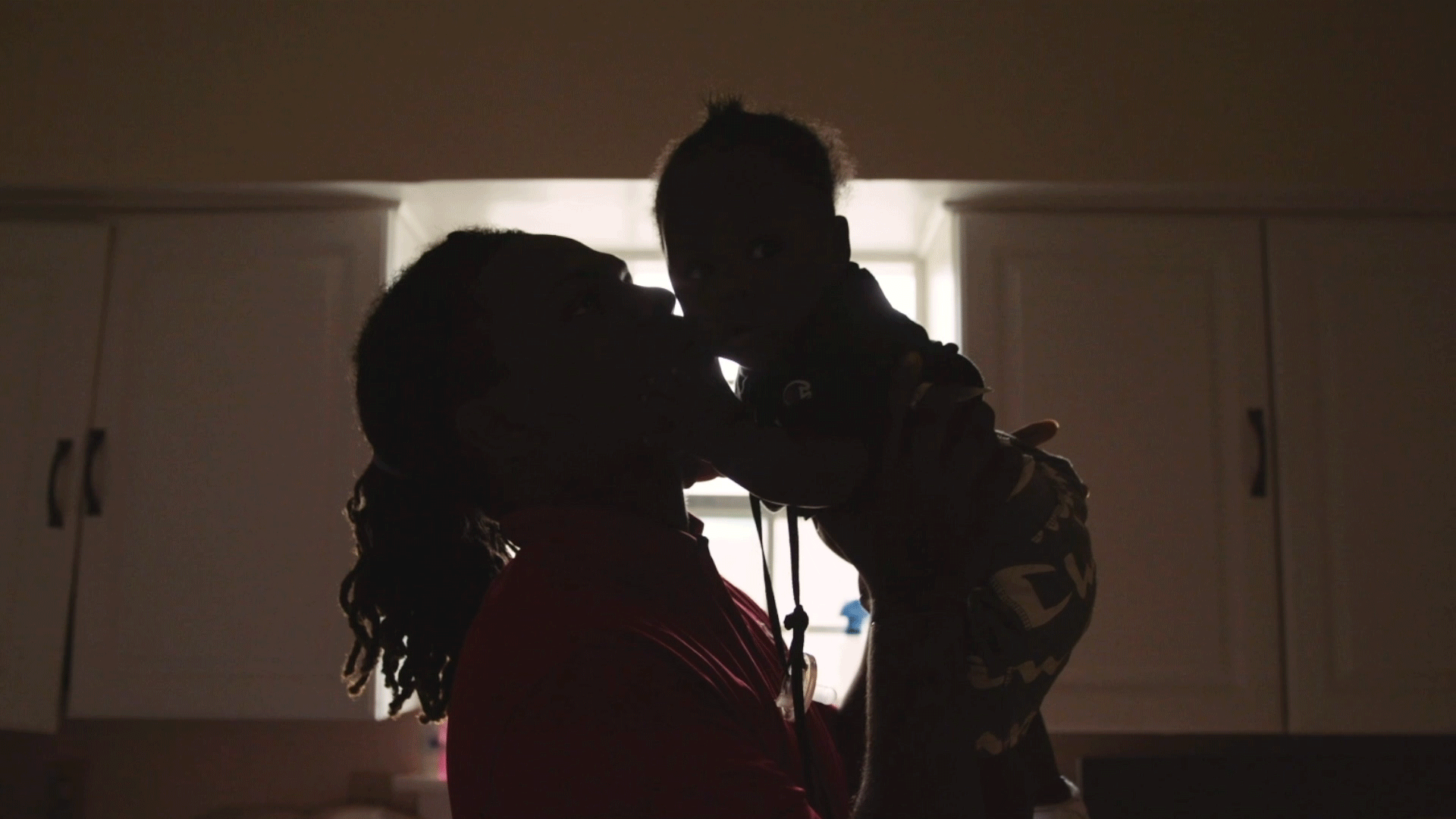As we celebrate Father’s Day, W.K. Kellogg Foundation (WKKF) recognizes all the ways men show up as caregivers. Men are integral to raising families and raising communities. In this second story of our two-part Father’s Day series, we look at how celebrating dads means honoring their efforts and opening up new and wider pathways for men to be actively engaged in children’s lives.
WKKF Dads and Paid Leave
WKKF wants all children and families to thrive and we support family well-being both as a grantmaker and an employer. Family leave and flexibility for all caregivers ensures employees lives are viewed holistically, encourages balance and contributes to employee retention. We looked no further than fathers on WKKF’s own communications team to understand the many ways paid leave improves both home life and the workplace.
Paid Leave for Dads secures partner/marital bonds
Javon Dobbs playing with his children at home.
Javon Dobbs, WKKF communications manager, agrees about the cementing of bonds. When his first son was born in 2019, he didn’t quite know what he was in for. “I underestimated the amount of time and attention it takes to give your children the presence they deserve,” Dobbs recounts. “That was something I learned during my first paternity leave.”
“There’s a lot of care for your new baby and your spouse as she recovers and gets adjusted to ‘mommy hood.’ Even your relationship – it gave us a foundation to adjust to being parents, figure out schedules and how we wanted to organize our life together.”
When fathers take paternity leave there’s a noticeable drop in divorce rates, according to a study conducted by sociologists at Ball State University and Ohio State University and summarized in an April 17, 2020 New York Times article.
Leave for Dads Improves Moms’ Health Too
A month after giving birth to their first child, Dobbs’ wife Tania had an emergency surgery to remove her gallbladder, one of many common health needs after women give birth. For Dobbs, this was another moment of epiphany.
“I kept thinking ‘thank God I’m not at work right now. This would really be hard.’”

A study in Sweden, a country with one of the most generous paid leave policies, found that when fathers take leave after the birth of a child, there’s a 26% decrease in prescriptions for anti-anxiety medication for moms, 14% fewer hospitalizations and visits to specialists and an 11% drop in antibiotics prescriptions. These statistics shed light on how fathers’ time at home can also chip away at the maternal morbidity rate. In the United States, that rate has risen 50% over the past generation. When dads can take time off, it allows women to respond to post-birth infections and other medical needs more quickly. See New York Times’ 2019 coverage of lessons learned from Sweden.
Better Employee Morale
Dobbs says his relationship with WKKF as an employer was positively impacted from the time he took after the birth of each of his sons. “I feel a gratitude that causes me to show up at work in a certain way,” he reflects, “because WKKF made an investment not only in me, but in my family.”
Robinson agrees. “I had that reality check too. When it came to my life and my family, we were good and we were cared for.”
A 2019 report published by PL+US and the Georgetown Center on Poverty and Inequality showed that paid leave for all categories of workers:
- Improves labor market attachment and increases earnings over a person’s career
- Decreases the need for public assistance
- Leads to better job retention, lower turnover rates
- Improves employee morale and lowers employee stress
Paid Leave, Racial and Social Equity

Check out part one of the Father’s Day series
Unfortunately, the majority of the U.S. workforce won’t have the experiences described by Robinson and Dobbs. Only 20% of the general workforce and 26% of government workers are covered by some form of leave policy, including 43% of Black employees and 25% of Latinx employees. Ninety-two percent of low-income workers lack access to any form of paid leave and one out of seven low-wage workers have lost a job in order to care for a family member. Many new moms and dads are forced to make critical decisions about the balance between their family’s overall health and keeping the lights on, putting food on the table and having a roof over head.





Comments